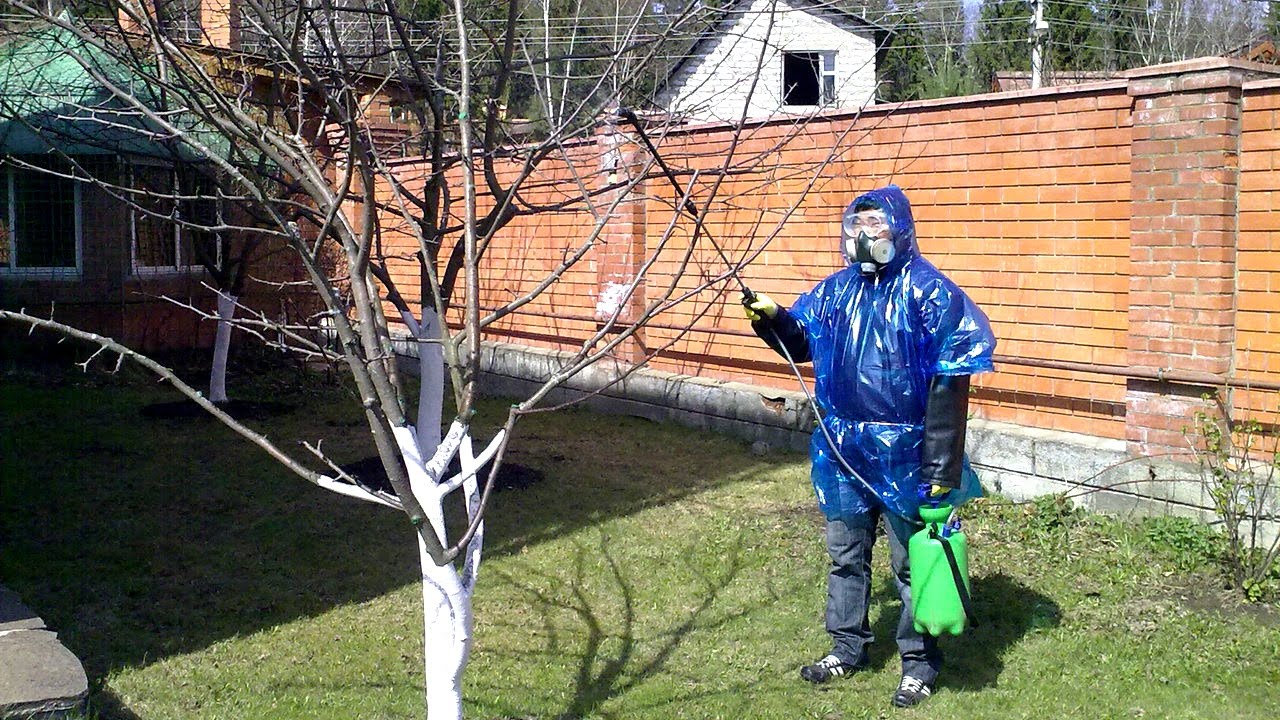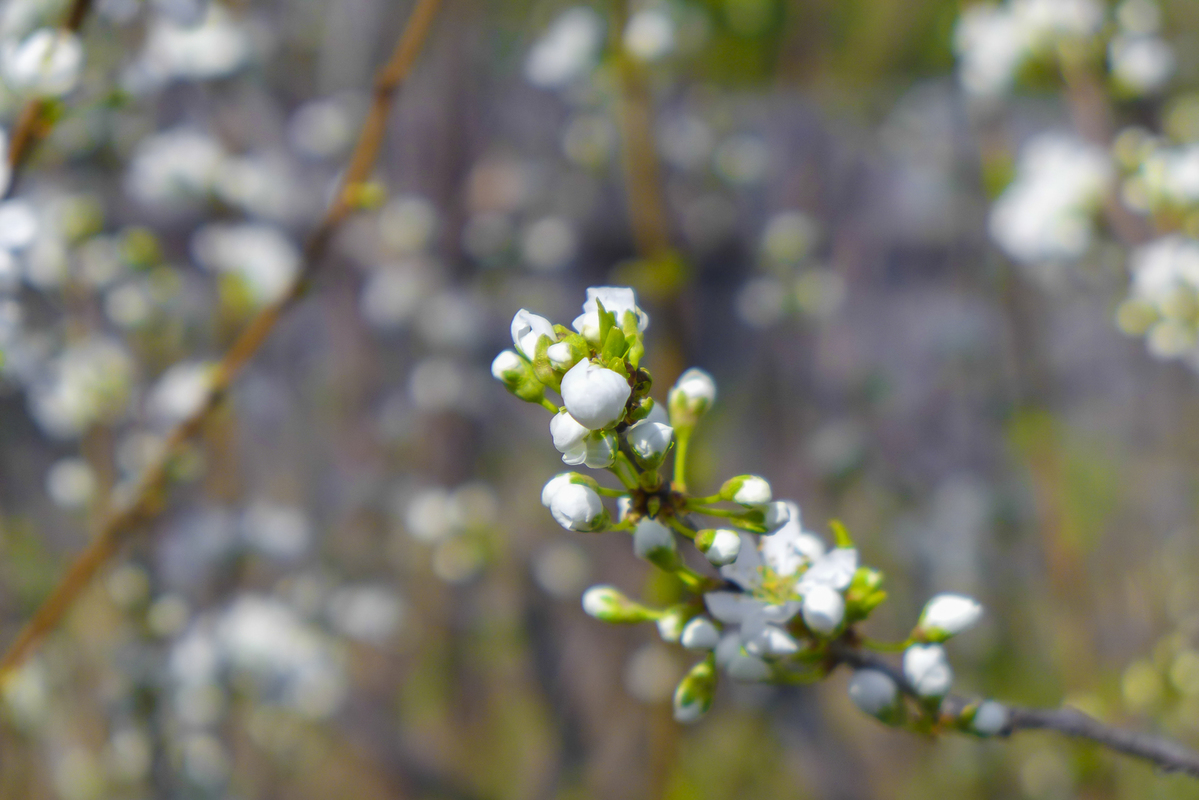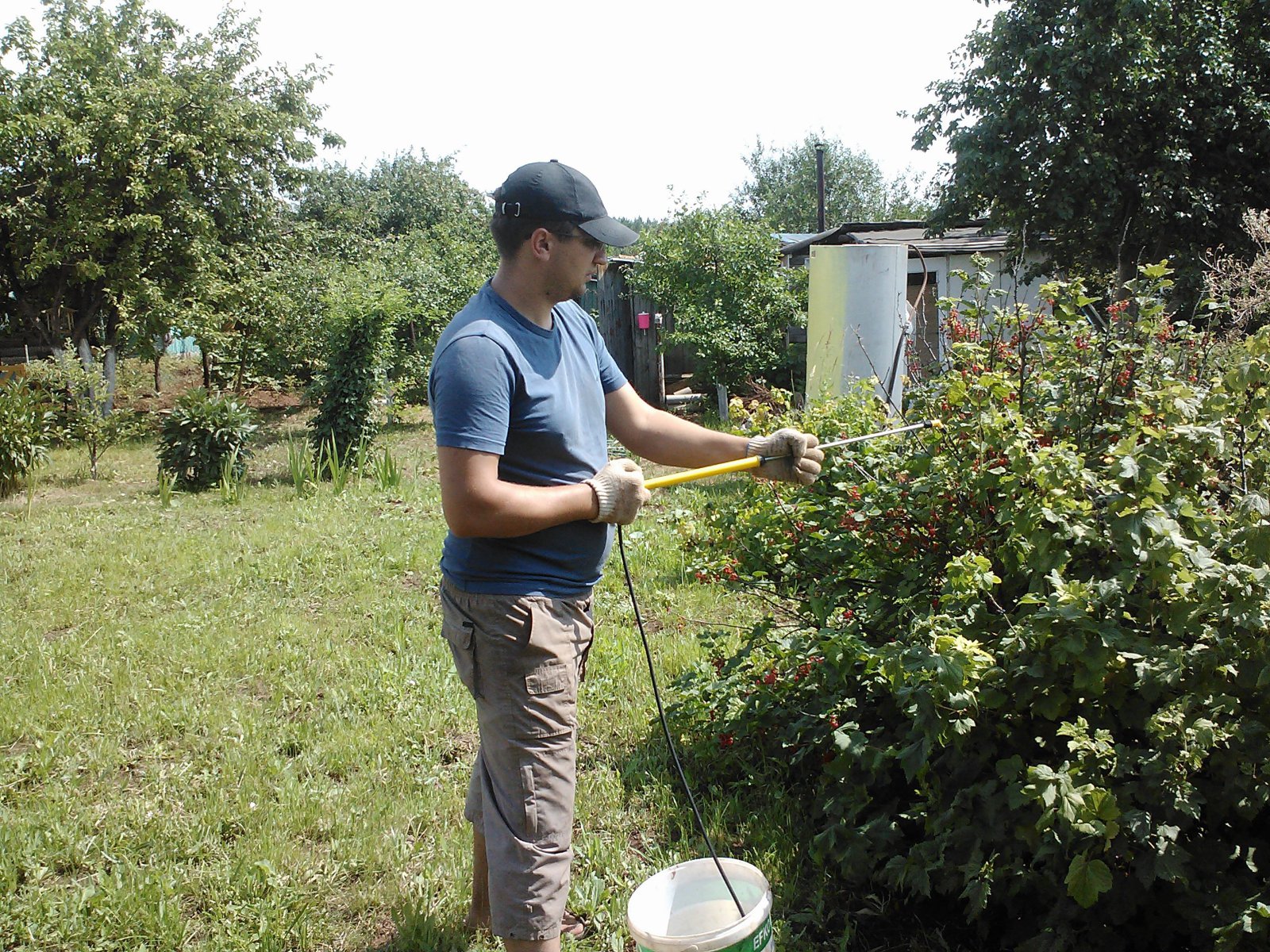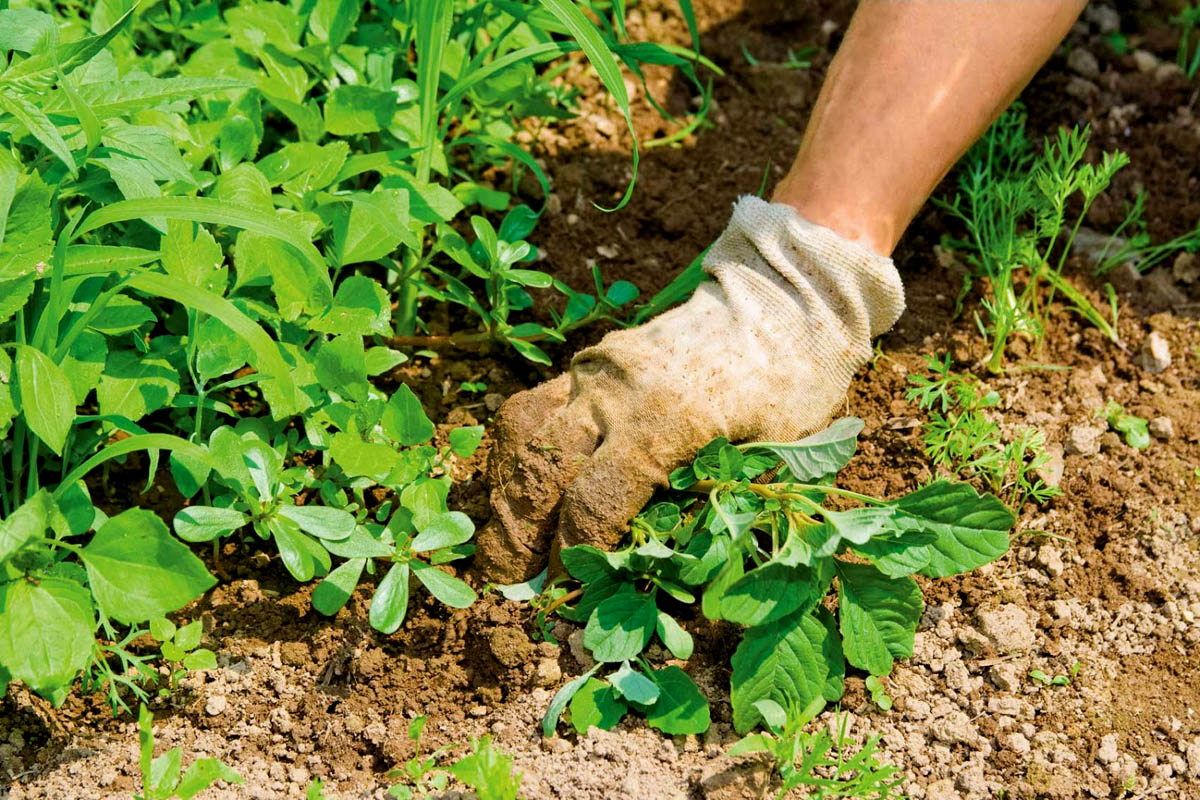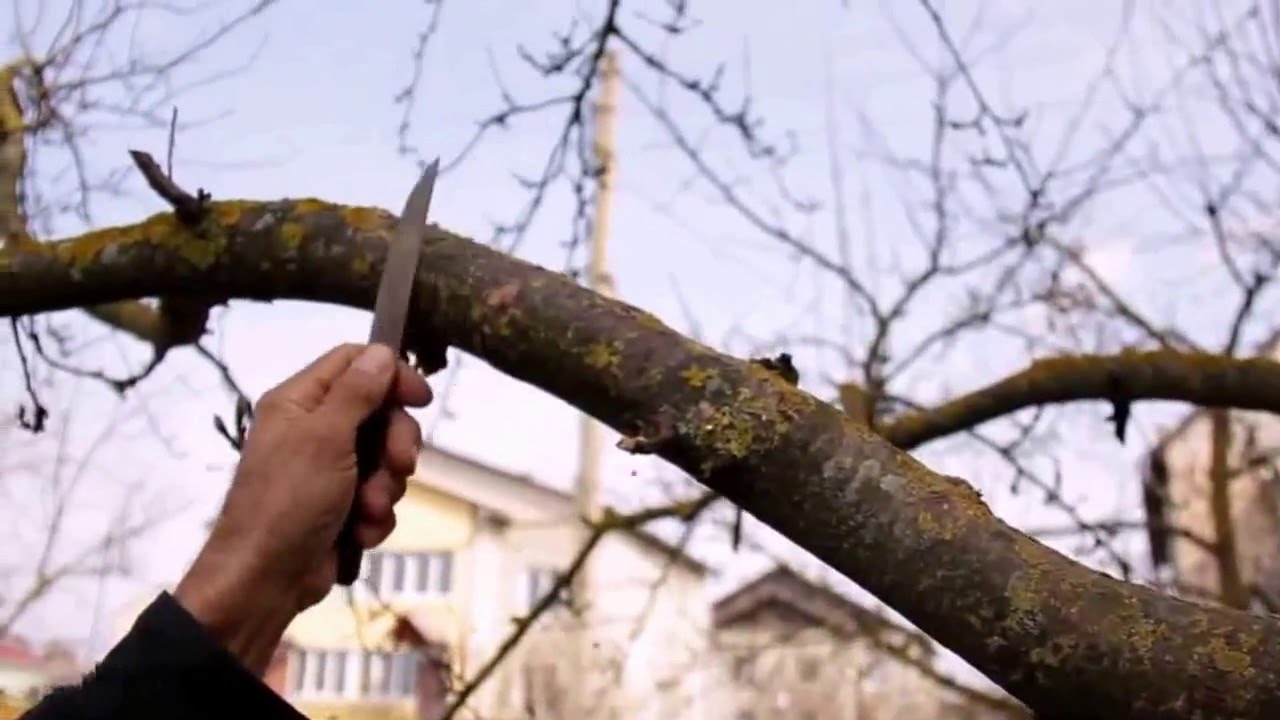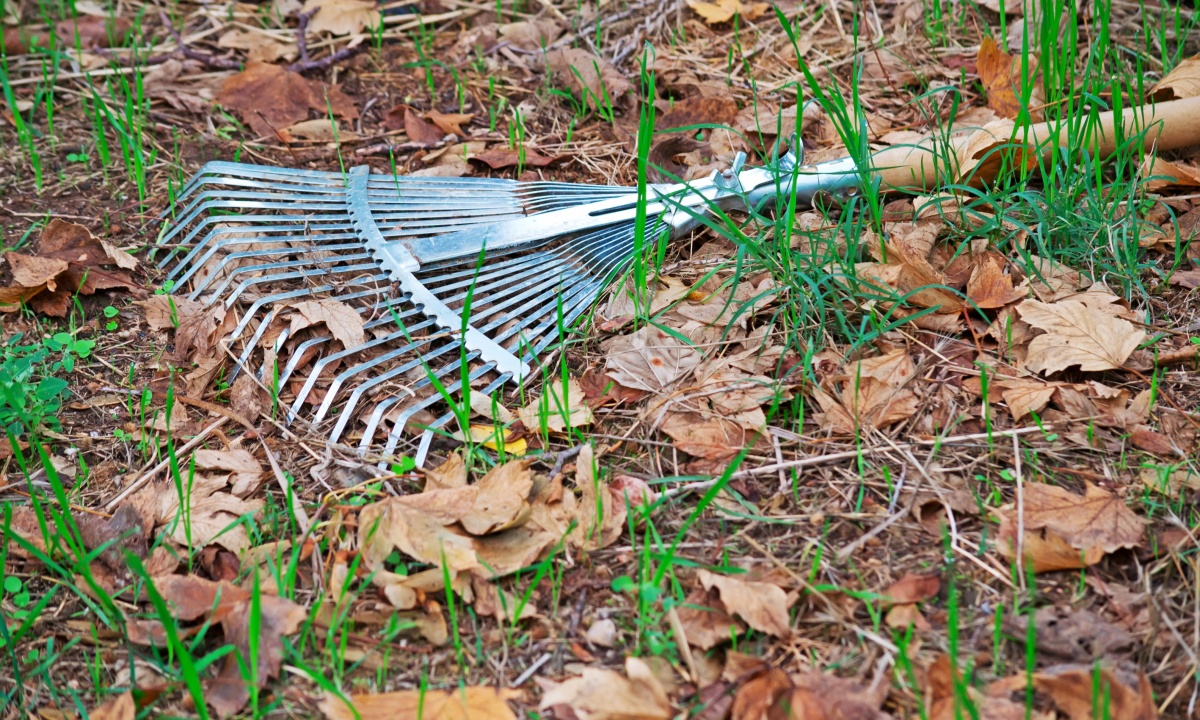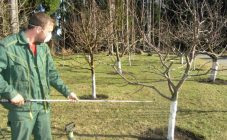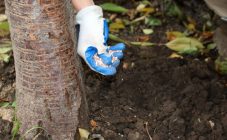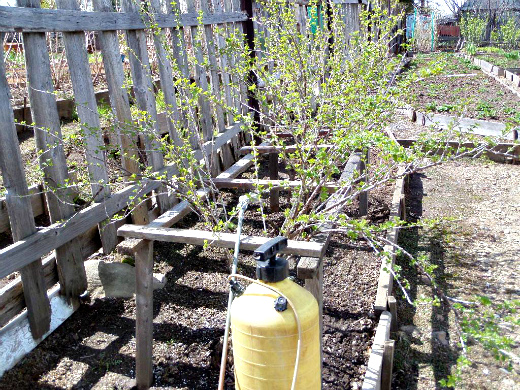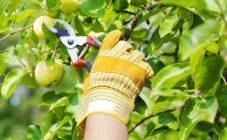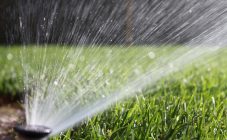Content:
With the spring awakening of nature in the garden and vegetable garden, an important period of processing shrubs and fruit trees from possible pests and diseases begins. One of the most effective protective methods is considered to be spraying berry bushes and garden trees in early spring, when the last snow has just melted and the first warm rays of the sun begin to warm the frozen ground.
The benefits of spraying
The main goal and dream of every gardener can be safely called the creation of a well-groomed and healthy garden with tasty and juicy fruits. Unfortunately, often the path to the cherished dream is blocked by all sorts of obstacles in the form of viral diseases of fruit trees and pests parasitizing them. The best protection of the garden is provided by spraying with disinfectant solutions that penetrate deeply into the top layer of fruit buds and tree bark. Spray the area in a timely and regular manner. Only in this case can you get a healthy and high-quality harvest.
If you sprinkle plants with urea (carbimide), you can get a double effect - protecting plants from pests and feeding trees. This is especially true for young seedlings of fruit trees, since urea stimulates plant growth.
Spraying time
The timing and time of treatment of orchards and berry fields with protective agents depends on many factors. If for large horticultural farms the priority goal is to obtain the maximum number of beautiful "marketable" fruits of an attractive appearance, while the environmental friendliness of apples, pears, peaches, grapes and other fruits takes only the second place in the list of priorities, then it becomes obvious that the garden is frequently sprayed, the frequency of which per season can vary from 10 to 16 times. For amateur gardeners, on the contrary, the dominant factors are the naturalness and taste of the harvested crop.
In time, protective treatment is carried out in spring, summer, during the period of activation of various pests, and even in late autumn. It is recommended to pay special attention to the spring processing of plants.
Stages spring spraying
At home, in the spring, it is recommended to carry out processing in three stages:
- The first stage of processing is carried out when the buds on bare trees are in a "dormant" state. The optimum outside temperature of the processing air is considered to be +5 degrees. In the middle zone of the European part, this time coincides with the first month of spring - March. It is at this time that fungus and viral diseases such as moniliosis and scab are activated. Protective treatment against microorganisms begins with preparatory work, namely, inspection of cracks in the bark of fruit trees and cleaning the trunks with a special brush. If this simple procedure is not carried out, then the benefits of protective spraying are reduced significantly, and the protective effect will be practically zero;
- After the March processing in early April, it is recommended to start the second stage. It is at this time that it is necessary to make protection, because.the budding process of trees begins. During this period, the fruit buds begin to swell and burst, and the green leaves have not yet bloomed, but already take a conical shape. The danger is that the larvae of insect flower beetles, which feed on the fruit juices of the buds, adversely affect their development. As a result, the buds of the plant do not open and simply die. In addition to spraying with pesticides, there is an effective folk way to get rid of the fruit flower beetle: a PVC film is spread under the tree. A long stick with a rag wound around the edge is tapped on the branches of the tree and shaken. Harmful insects fall on the film, all that remains is to collect and destroy them;
- The third stage of spring processing begins during the flowering period. At this moment, fruit trees and shrubs are very vulnerable to damage by various types of parasitic insects, such as ticks, caterpillars, aphids. The decision to carry out May processing is made after a visual inspection of the garden trees. At the slightest sign of infection, it is very important to react quickly and spray 14-21 days after the end of the mass flowering.
Autumn gardening is an important procedure that completes the season in the garden and its preparation for wintering. After the completion of autumn leaf fall, in October or November, trees are sprayed with pesticides or organic mixtures to kill various harmful insects. Before this procedure, it is recommended to remove all fallen leaves and branches and complete the processing of trees before the first frost.
Preparatory work
Before the first treatment of trees with protective agents, a number of preparatory work must be performed:
- To prune frozen and broken tree branches, remove tops;
- To process areas of tree bark damaged by rodents with 1% aqueous solution of copper sulfate;
- It is recommended to treat the cutting sites with the "Ranet" preparation;
- The preparatory work also includes clearing lichens, damaged bark;
- Cleaning of peeled bark and branches. It is recommended to wrap the garbage in plastic and take it outside the site and burn it;
- After cleaning the near-trunk circles from last year's fruits and fallen branches, it is recommended to whitewash the tree trunks and near-trunk branches. You can buy a whitewash solution at a store or make your own. To do this, mix the following ingredients: 1 kg of clay, 250 g of copper sulphate, 2 kg of slaked lime, 1 piece of grated laundry soap, add a bottle of 250 grams of PVA glue and dilute this whole mixture in 10 liters of water.
First processing period
After the preparatory work, the time comes for the primary spring processing of the garden. The procedure is carried out on a dry, windless day without predicted precipitation in the coming days.
To do this, you must prepare the inventory and tools in advance:
- Disinfectant solution;
- Sprayer;
- Protective glasses;
- A gauze bandage or respirator;
- Rubber gloves;
- Headscarf or bandana.
When spraying protective equipment, open areas of the body should be avoided in order to exclude the contact of the toxic chemical on human skin. It is recommended to remove children and pets from the garden during the procedure. An important point is the outside air temperature: it should not be lower than +5 degrees, at lower temperatures the effect of treatment can be zero.
Spraying process
Do not forget about the processing of the near-stem areas, they should also be watered abundantly.After spraying in order to prevent various parasites from emerging from the soil, the soil under the garden tree is covered with a black film, which is removed after the tree has completely faded. After processing, it is recommended to put on trapping belts on tree trunks.
Weed control
Weed grass causes a lot of inconvenience for summer residents and amateur gardeners.
There are several ways to control weeds:
- Traditional. This method is familiar to almost all farmers: when digging the soil, each weed is removed and the remaining roots are carefully selected. If in small areas of the garden you can dig up the soil with an ordinary shovel or pitchfork, then for large areas it is advisable to plow the row spacing with a walk-behind tractor or a mini tractor. Such deep tillage helps to get rid of the most "harmful" weeds with a powerful root system;
- Chemical method. In this case, the weed is removed with the help of herbicides, which are sprayed in places where the mass accumulation of weeds grows;
- Biological method. To suppress the vital activity of weeds, the soil is covered with opaque materials that do not allow sunlight to pass through;
- Overriding method. Weeds grow on empty areas of the garden. Therefore, it makes sense to sow the empty land with siderite or summer plantings of fast-growing vegetables. You can also partially solve the problem of weeds by mulching the soil;
- Alcoholic way. For the first time this interesting method of weed control was tested in America in the 30s of the last millennium. A month before the start of sowing work, the land is treated with a weak solution (up to 6%) ethyl alcohol, which can be equated to 150 grams of ordinary vodka dissolved in a bucket of water. Alcohol provokes a friendly and simultaneous emergence of weeds, after which they are all carefully removed;
- Fiery way. This exotic method involves the use of a blowtorch, which is passed along the garden bed. The beds are treated with a sliding flame. At the same time, it is strictly forbidden to stay in one place, since you can burn not only weeds, but also sown vegetables. After such treatment, the soil is cooled. To do this, it is enough to pour water on it;
- Exhausting way. As you know, a plant consists of a root system and an aerial part, which are interconnected. This means that if you carefully cut off all the foliage and stems at the very surface of the soil, in order to grow new shoots, the plant will need to consume vital and nutrient substances from the rhizomes.
- Prophylactic. The use of fresh manure as organic fertilizer threatens the growth of weed seeds, which are found in large quantities in unripe compost. It turns out that, together with feeding the garden, gardeners themselves create a weed problem, involuntarily sowing weed seeds on their land plot. Therefore, it is so important to provide preventive measures and use rotted organic fertilizer, use correctly formed compost, mow and remove weeds in a timely manner, preventing its seeds from ripening.
Applying any of the above methods, you can permanently get rid of such an unpleasant phenomenon as the growth of weeds in the garden or cottage.
The final stage
Before spraying, a visual inspection of fruit trees and berry bushes for the presence of visible pests is carried out. Such a preliminary examination makes it possible to determine the advisability of carrying out the final treatment associated with the spraying of potent agents that can damage the fruit ovaries.The treatment is carried out by spraying the green mass of trees and shrubs with oxide copper preparations, Bordeaux liquid, carbamides and other broad-spectrum preparations. The timing is chosen so that the permissible ambient humidity does not exceed the standard. Otherwise, green leaves and fruit ovaries may suffer from burns.
Shrub processing
Berry bushes, like fruit trees, require protective treatment against pests and viral diseases in the spring.
The processing of shrubs in the spring from pests and diseases is carried out in various ways:
- In early spring, all diseased and broken branches should be removed, the tops of frozen shoots should be removed. Last year's leaves must be collected and burned, since it is in this beneficial environment that various pests hibernate;
- After the bushes are cleared of last year's debris, the soil under them must be sprinkled with ash and dug up. The benefits of such treatment are twofold: nests and large accumulations of larvae and fungal spores are destroyed, and the penetration of fertilizers to the roots of the bush is improved;
- To destroy a dangerous pest - currant kidney mite, the treatment of currant bushes with boiling water is often used. This simple and effective procedure is carried out in early spring, when the currant buds are not yet swollen. Boiling water scalds berry bushes, destroys larvae, mites and spores of fungal diseases;
- Treatment of berry bushes in spring with chemicals. Since the growing season of berry bushes begins early, it is important to carry out protective treatment before the buds of the plants swell;
- Processing with folk remedies. Among the most popular methods are protective treatment with an aqueous ash solution, which is prepared at the rate of 100 g per 10 liters of water. In order to achieve a guaranteed 100% success rate, plants should be treated for three days in a row.
In addition, you can spray the bushes with aqueous solutions of garlic and laundry soap, tobacco dust and ash.
Folk remedies
In order to minimize the use of chemicals for spring processing of fruit trees and berry bushes, experienced gardeners use a considerable "arsenal" of folk remedies:
- Whitewashing the bark of trees with a lime solution, which is prepared at the rate of 2 kg of lime per 10 liters of water with the addition of 1 kg of clay and 300-350 g of copper sulfate powder to the resulting liquid;
- The use of diesel fuel for processing plant bark. Spraying with diesel fuel creates a protective oily film that protects the plant from harmful insects. After processing for 2 to 3 hours, insect larvae and eggs suffocate from lack of air;
- Processing with insecticidal homemade compounds. An example is the following formulation of herbs, tobacco dust, and orange peel. Cooking recipe: put 200 g of chopped tobacco in a 3-liter glass jar, add a handful of onion and garlic husks, pine needles and orange peels. The dry mixture is filled with hot water with a temperature of up to 70 degrees and is tightly closed with a lid. The bottle is placed in a warm place. After a week, the liquid is filtered and warm water is added to a volume of 10 liters. The solution is stirred, add 100 g of tar soap, grated. The whole garden can be treated with the prepared solution; it is recommended to repeat the procedure after 10-12 days.
The procedure has to be carried out repeatedly, but such processing guarantees the absence of harmful substances in ripe fruits and berries.
Spring processing of fruit trees and shrubs in early spring from all kinds of pests and diseases requires a lot of labor.Having carried out this troublesome and laborious work consistently and in stages, the gardener will receive a good reward - a high-quality and tasty harvest.
